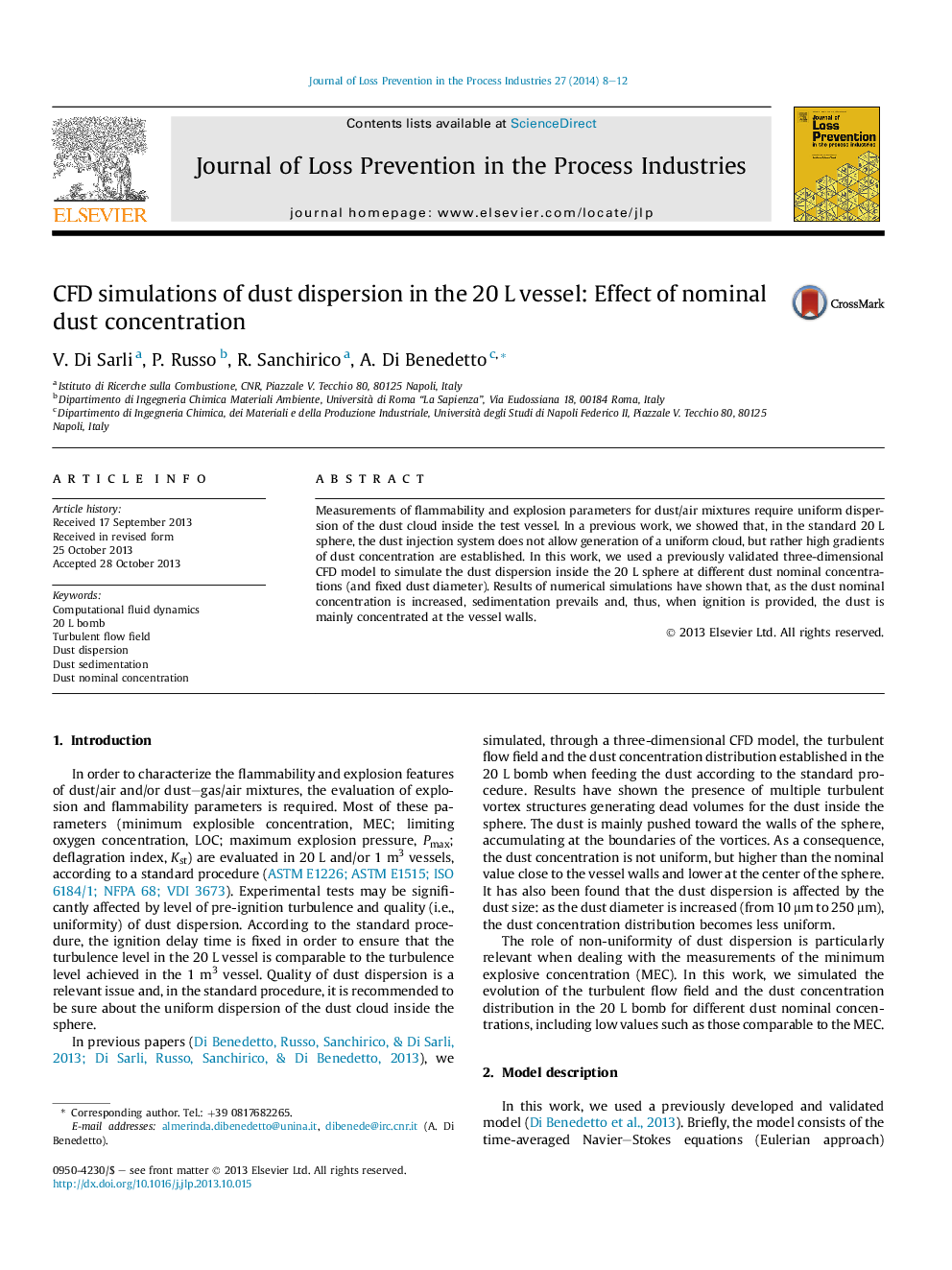| کد مقاله | کد نشریه | سال انتشار | مقاله انگلیسی | نسخه تمام متن |
|---|---|---|---|---|
| 586336 | 1453281 | 2014 | 5 صفحه PDF | دانلود رایگان |

• A validated CFD model was used to simulate the dust dispersion inside the 20 L bomb at different nominal dust concentrations.
• The velocity vector maps show that multiple turbulent vortex structures are established within the sphere.
• At low nominal concentration (100 g/m3), the dust mainly accumulates at the boundary of the vortices.
• At high nominal concentration (500 g/m3), sedimentation prevails and the dust is mainly concentrated at the vessel walls.
Measurements of flammability and explosion parameters for dust/air mixtures require uniform dispersion of the dust cloud inside the test vessel. In a previous work, we showed that, in the standard 20 L sphere, the dust injection system does not allow generation of a uniform cloud, but rather high gradients of dust concentration are established. In this work, we used a previously validated three-dimensional CFD model to simulate the dust dispersion inside the 20 L sphere at different dust nominal concentrations (and fixed dust diameter). Results of numerical simulations have shown that, as the dust nominal concentration is increased, sedimentation prevails and, thus, when ignition is provided, the dust is mainly concentrated at the vessel walls.
Multiple turbulent vortex structures are established within the sphere. At low nominal concentration (100 g/m3), the dust mainly accumulates at the boundary of the vortices, while at higher nominal concentration (500 g/m3), the dust sedimentation prevails giving rise to highly concentrated regions close to the vessel walls.Figure optionsDownload as PowerPoint slide
Journal: Journal of Loss Prevention in the Process Industries - Volume 27, January 2014, Pages 8–12